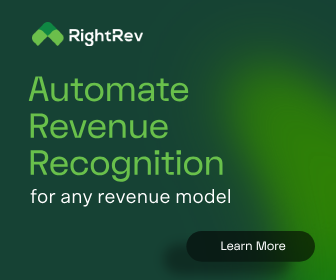If 2020 wasn’t the year of the word “unprecedented,” it was the year of disruption. Disruption, disruptive, or disrupted was thrown about throughout the year to explain how workflows, processes, or technologies have changed. But disruption is not new. Digital disruption brought newspapers down, changed the car buying experience, and connected the world in ways that we never thought possible.
Adapting to the Pace of Change
But disruption doesn’t end—change, after all, is constant. Since the Industrial Revolution, we’ve been exposed to new technologies at increasing speeds—and in literally every sector of our personal and professional lives, technology marches on. The way that we shop, pay, or consume media has changed significantly in the past decade, and will probably change again in the next half-decade.
Even in the accounting and finance space, an area in which traditional approaches are often the safest, technology has become part of the conversation. Everything from the technology we use to the way we work is shifting, and we’ll have to ask whether we’re joining the parade or getting left behind.
But the only thing more dangerous than avoidance is blindly embracing technology for technology’s sake—just ask anyone who spent thousands on Google Glass only to find its support pulled within years.
Five Technologies to Watch: Will They Rock or Wreak Havoc on Your Business?
Knowing where you should be looking requires you to understand where everyone else is going, working to stay one step ahead. To do this, however, leaders need to know what kind of technology will be most important to them. Luckily, a recent guide from Controllers Council Sponsor FloQast looked to discuss some of the things you should know.
Application Programming Interface (APIs)
If you ever wondered how things connect, it usually comes down to an API. APIs are the software intermediary that allow a variety of applications (apps) to talk to each other. In essence they are the routines, protocols and tools that facilitate communications between systems, perform backend calculations, and then transparently return results to the requestor.
Rather than forcing you to live by and die by CTRL-C, CTRL-V, APIs let data move between the two. Application A can read an input from Application B automatically and use it to inform itself.
Robotic Process Automation (RPA)
RPA is a maturing form of business process automation which uses web robots, or “bots,” to complete tasks or scripts, accomplishing activities that were typically reliant on humans to perform. Though not considered “full AI,” RPA gives you many of the benefits—without having to train computers.
RPA is built on algorithms, helping you to automate processes that relied on previously low-value work from humans.
Artificial Intelligence
Beyond RPA, artificial intelligence allows machines to learn and problem solve. AI has the potential to add value in its ability to contribute to any situation where human document review has been to date the only viable option. From fraud identification to better reporting, AI is quickly entering the mainstream and delivering results.
Watch our on-demand webinar to learn more – Accounting Robots: How to Automate the Finance Back Office.
Blockchain
Referring to a decentralized network of records, blockchain is built to provide verifiable data about any transaction. In context, blockchain is a method to transfer assets between two peers without an intermediary, in an open, secure public database where its users have to agree to make additions or changes.
Blockchain can potentially automate time consuming manual accounting processes across the supply chain, property ownership, in financial transactions, and with asset ledgers. In action, it has the potential to:
- Eliminate fee-based intermediaries like PayPal and title insurance, and potentially even traditional banks
- Become part of accounting infrastructures, with some Big Four firms already implementing blockchain for client billing and for personal use by their staff
- Assume a role in tracking and recording changes in inventory and property ownership across a global economy
The New Work Landscape
Even after 2020, many still are confused how to get the most out of remote work. Still, a free-for-all, no holds barred approach to flexible work environments can create as many issues as it might, on the surface, purport to resolve.
But this drives forward a need—a need for connectivity. People still need to feel a sense of belonging, collaboration needs to return. Enablement matters. The fact remains that more firms and organizational accounting departments are functioning as 100% remotely-populated entities. But it pays to ask how your technology will move from letting something happen to empowering users.
Learn More: Tech Trends Controllers, CFOs & Accounting Professionals Need to Know
The pace of technology truly is changing everything, and whether you’re a Boomer, Gen Xer, Millennial or one of the “iGeneration,” change is part of the cadence of everyday existence. Technology advances may take their toll on traditional accounting roles, including routine bookkeeping, data entry, and formatting tasks. If you’re looking to get more out of the next few years in business, you’re going to want to read this free report from Controllers Council sponsor FloQast.
Titled Tech Trends Controllers, CFOs & Accounting Professionals Need to Know, this guide dives a whole lot deeper into the above-mentioned trends and highlights the way that finance professionals need to step up to embrace technology. How can you get the most out of them? Click here to download the entire guide.
Additional Technology Resources
Business Intelligence: How Can It Put You in the Know?
Improving the Audit Process: How Technology Fits In
Is Transaction Processing Finally Realizing the Promise of Automation?




